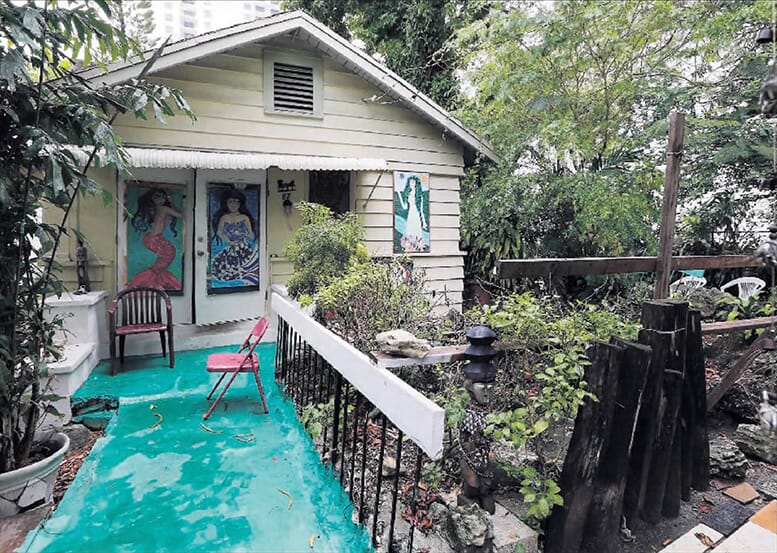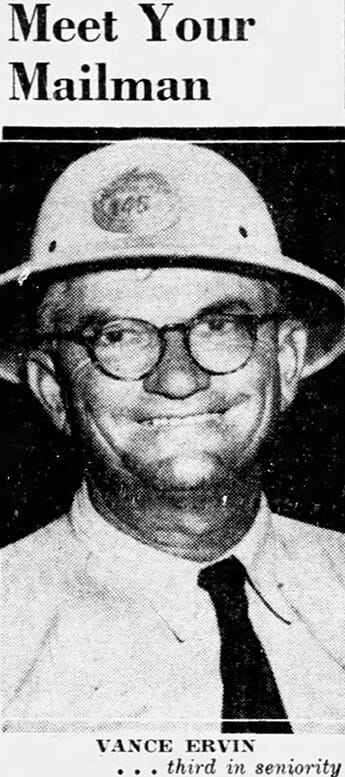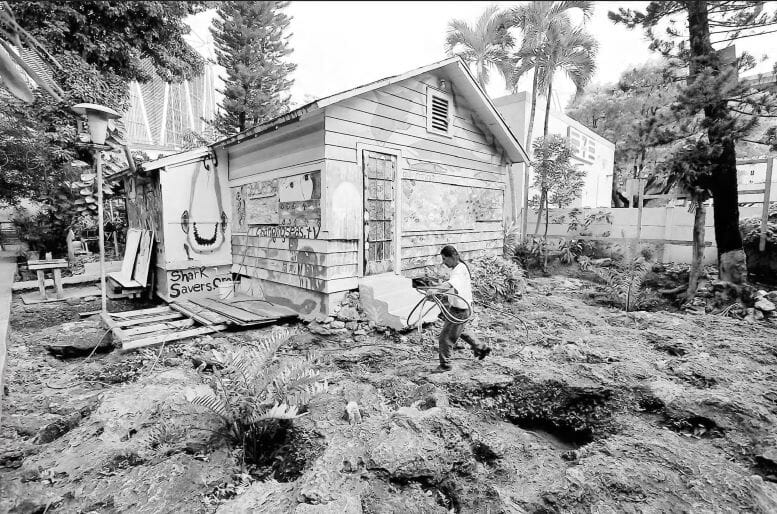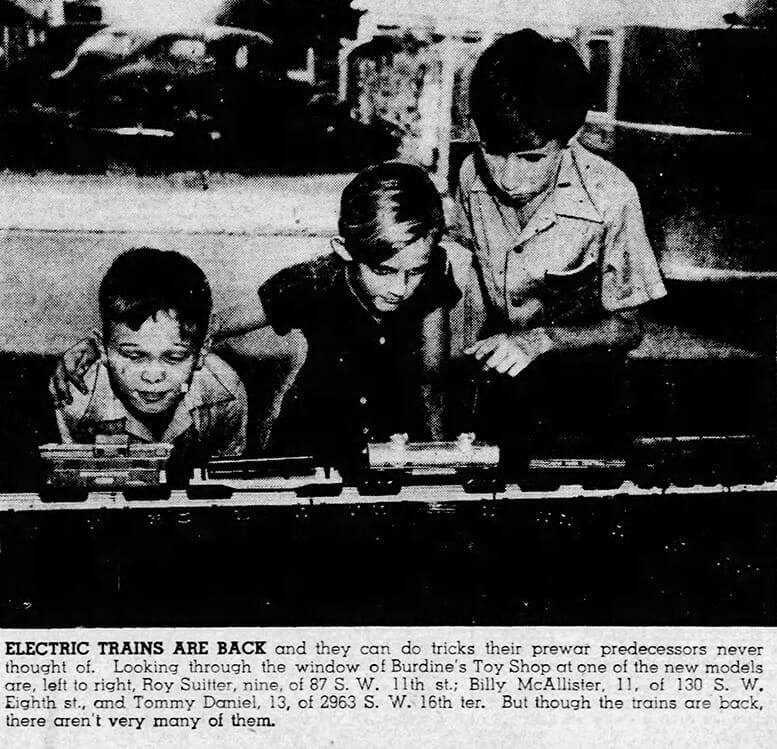
The Brickell neighborhood has been one of the most rapidly changing areas in Miami for several decades. During this time, single-family residential homes have given way to high-rise condominium towers at an unprecedented pace. However, there is one homeowner who garnered international attention for refusing to sell his family’s property despite the multi-million dollar offers he was presented. This long-time Brickell resident was staunch in his belief that his property represented more than just dollar signs.
Ishmael Bermudez, the long-time resident of the single-story home at 87 SW Eleventh Street in the Brickell neighborhood, grew up in the home that he explored, excavated, and protected for decades. In an interview with Estephani Cano of the Miami Herald in 2015, when asked about selling the property, Ish, as he is known to his friends, said: “there is not enough money that can buy what’s on this land because it’s simply priceless. How can you put a price on humanity? It has none.”
The 1920s-era residence, along with the property it resides on, is more than just a plot of land in a rapidly changing neighborhood. Ish spent a lot of his youth excavating and looking for artifacts from cultures that preceded contemporary Miami residents by hundreds of, if not a thousand, years. The 5,000-square-foot lot was named the “Well of Ancient Mysteries” by Ish for the mysteries he believed the property held underground. The “Well” referred to is an underwater spring that is believed to have been a water source for the native tribes that once roamed the area’s pinelands long before it was developed into the Brickell residential neighborhood.
It was Ishmael’s plan to continue to ward off the speculators and developers to protect this sacred plot of land in what he feels is an overdeveloped quarter of Miami. While Ish was never enticed by the riches that the sale of this property would have yielded him and his family, it was ultimately a move made by the Miami-Dade County appraiser’s office that forced the sale of this property.
Few Owners Over 100 Years

Figure 1: Picture of Vance Ervin in the Miami Herald published on July 3, 1939
The residence at 87 SW 11th Street was constructed by Lucius C. Rice, a real estate speculator and mortgage broker, in 1920 which served as his family residence until 1924. A perusal of the real estate sections of the Miami Metropolis and Herald indicates that Rice was a speculator, buying and selling plots of land throughout the Miami area, beginning as early as 1910. Some of these lots would be sold soon after he purchased them, but the plot of land on SW 11th Street was one where he constructed a home and held onto for a few years.
Rice’s daughter, Helen R. Hilson (married name), joined her father in the real estate business in 1923. Helen and her husband, who also worked for Lucius before he married his daughter, later formed their own very successful real estate office under the name of Hilson Realty. It was this entity that purchased George Merrick’s organization, the oldest real estate firm in the City of Coral Gables, in April of 1942 to form the largest realtor in the Gables at that time.
In 1924, Rice sold the home at 87 SW 11th Street to Vance Ervin, who was one of the first twenty mail carriers in Miami, given the employee number of 15 based on his seniority. After a nearly two-year stint serving in the United States Navy in Key West, Florida, Ervin moved to Miami and was hired by the Post Office as a mail carrier on October 1, 1921. His postal route was from N.W. Ninth Street to Twelfth Street, and from the FEC railroad to N.W. Sixth Avenue. Vance and his wife lived in the residence on SW 11th Street from 1924 until the early 1940s.
The next owner of the home was the Suitter family who lived at the residence from the early 1940s until the early 1960s. There was a picture published in the Miami Herald on October 13, 1946 (see Figure 3), of a nine-year old Roy Suitter, looking through the Burdine’s Department Store window, on Flagler Street, at an electric train set hoping he would find it under the Christmas tree a little more than two months later. It was likely Gladys Suitter who sold the property to Ishmael’s father in the early 1960s.
When the Bermudez family moved into the modest 11th Street abode, it was a historic time during the peak of the Cold War with Russia. Ishmael, who is of Colombian descent, remembers hearing the unusual sounds of trains traveling on the nearby FEC railway tracks, in the middle of the night in October of 1962, during a time period remembered as the Cuban Missile Crisis. The FEC tracks were across the street, to the west, of the Bermudez residence. The home did not have air conditioning, so the family kept their windows open at night to let in fresh air and an 11-year-old Ishmael remembered getting up and watching a procession of train cars moving missiles from north to south, which were ultimately destined for Key West, Florida, during the standoff with Russia and Cuba.
A Labor of Passion
Shortly after the crisis of the Cuban Missile Crisis had passed, many people in South Florida began to consider the value of life, natural resources, and, in particular, clean water. The concern was what would South Florida residents do if the water supply became contaminated with radiation as part of nuclear confrontation with Cuba?
Ishmael was attending Southside Elementary School, a couple of blocks south of the Bermudez home, during this crisis when his sixth-grade teacher challenged him with finding the ancient springs that the Tequesta Indians drank from during their time occupying the area. Ish began a multi-year journey to find the fresh water well that he and his teacher believed was nearby.
He focused his search on his family’s property and began excavating the back yard. In doing so, he found artifacts that a local Native American woman named Queenie helped him identify. While other 11-year-old boys spent their time being kids, Ish was becoming an amateur archaeologist as he spent a lot of his time digging and discovering.
When Ish turned 19 years of age, he finally found the elusive spring, under a mango tree, just a few yards from his house. In the Miami Herald article from 2005, Ish stated “aside from being sacred, this water is rich in minerals and free from any toxins. That is why those of us who drink it stay healthy.” He had finally found the water source that he was told about as a young six-grader.
Through the years, Bermudez discovered artifacts that professional paleontologists have found interesting. Bob Carr, the long-time county archaeologist, commented on Ish’s passion project in that same 2005 Miami Herald article:
“It’s definitely admirable work, and it’s a giant project. I have to say that some of the discovered objects [on Bermudez’s land] were part of the Tequesta culture, and there’s also animal bones and prehistoric shells.”
Ishmael has been the occupant and caretaker of the property at 87 SW 11th Street continuously since 1985 and has hosted interested parties from the around the world to learn more about his work and the sacred plot of land on which his residence resides. He shares the spiritual and cultural context of the land supported by his findings through the years. During his 2005 interview with the Estephani Cano, Ish declared:
“I’m committed to sharing the knowledge I have acquired through an excavation of more than 50 years, waiting for people to understand that we can’t keep destroying our natural resources. If there’s no water, there’s no humanity.”
Having known Ishamel Bermudez for more than two decades, it is clear to me that he was sincere and steadfast about the preservation of the family property and the fresh water spring found underneath it, despite the outrageous amount of money that developers and investors have offered through the years. It took circumstances beyond his control to remove him from what he believed to be a spiritual calling to protect this land.

Figure 2: Ishmael Bermudez caring for excavated backyard in 2015
County Pulls Homestead Exemption
After more than 60 years of ownership and occupation, the Miami-Dade County appraisal office made the decision to pull the family’s homestead exemption from the family’s residence which resulted in a dramatic increase in their property tax obligation. Homestead exemption, also known as the ‘Save Our Homes Cap’, is a Florida state law to help protect homeowner’s primary residence from a dramatic increase in their property tax obligation as the market value of their home increases over time. The intent was to allow long-term homeowners, who also occupy their residence, the opportunity to remain in their home despite changing real estate market conditions. It was really designed for times like these when the value of property has dramatically increased over a very short period of time.
The Bermudez family has owned the property at 87 SW 11th Street since the early 1960s and has had a homestead exemption on file with the county for decades. As part of oversight, the county appraiser will do a spot check periodically to make sure that the owner resident has not changed to ensure that they still qualify for the exemption. Typically, appraisers do not challenge a homestead exemption until they get notice that there is a change of ownership, or someone files a complaint that a homeowner should not qualify for the exemption.
As of last year (2022), while the market value of the property was listed on the Miami-Dade Property Appraiser’s website at roughly $3.2 million, the appraised value to calculate property tax was $190,090 leaving the family with a tax bill of $2,801 after the application of the homestead exemption formula. From the years 2016 through 2022, the taxable value of the property ranged from $167,091 to $190,090 in accordance with the parameters of the homestead exemption law.
However, despite no changes in ownership or occupant of the property, the county appraiser decided to pull the homestead exemption which prompted them to send the family a notice of their new tax obligation. In this notice, the county updated the value of the property, or set the tax assessed value, as roughly $6 million. How they determined that the value of the property increased from $3.2 million to over $6 million in one year is a head scratcher? Given the new assessed value, the Bermudez family was presented a property tax bill for over $91,000 due by the Fall of 2023. One family member declared that “the county pulled a fast one.”
While there is no evidence that the property appraiser’s office collaborated with any third parties that may have had an interest in motivating the family to sell, the entire process seemed irregular. The explanation for why the exemption was pulled had to do with Ishmael not being listed on the deed to the property, and therefore, the family no longer qualified for a homestead exemption. His mother, who had not lived in at the residence for a long time, was the only living family member listed on the deed. Therefore, Miami-Dade County’s property tax assessor apparently made the decision that the family no longer qualified for the exemption and simply notified them of this decision with an adjusted property tax bill for 2023.
How did the property value nearly double in value overnight according to the tax assessor’s office? Why did the county wait until 2023 to make this decision despite the fact that Ishmael was the primary occupant of the home for close to 40 years (1985 – 2023), and is the son to the person on the deed? These would be good questions for the county’s property tax appraiser’s office to answer.

Figure 3: Picture of Roy Suitter looking through Burdines window published on October 13, 1946
Property Sold in 2023
Given the old mantra that you can’t fight city hall, or county hall in this case, and the fact that it would take a lot of money to hire a tax attorney to fight the county’s decision, Ishmael’s siblings chose to sell the property to a real estate investor (speculator) for roughly $6 million. While the windfall from the property sale will certainly benefit the extended family, it became very clear that Ishmael was not happy with the decision.
When he was told about the sale of the property, Ish refused to move out of the residence. This led to an eviction process where ultimately the county sheriff had to enforce the removal of the longtime caretaker from the property that he was committed to preserving and protecting.
While Ish has never been motivated by money, it appears that it was ultimately the lure of a lot of money that motivated the county to make a change in the status of the family’s homestead exemption. While the public looks to the government to protect the average resident, some of their decisions by local South Florida municipalities seem to mostly benefit the wealthy, and in particular, the land speculators and developers. The small little house at 87 SW 11th Street in Brickell represented more than just a holdout owner that refused to comply to the wishes of developers, it was a place that the caretaker felt was sacred and needed to be preserved to protect a valuable natural resource that served humanity dating back to the very early history of the region.
Whether you agree with Ishmael’s viewpoint or not, you have to feel for someone who had such strong conviction for a life-long passion project that was taken from him overnight. While the decision to sell or keep the family’s property was not Ishmael’s to make alone, his commitment to that plot of land was steadfast. It is likely he feels like he has lost something that he often stated could not be valued by any amount of money. However, there was a powerful county official that disagreed, and it was the revocation of the homestead exemption, and the revision of the assessed value of the home by the property appraiser’s office, that provided the catalyst for the sale and the subsequent eviction of Ishmael from his family’s home of more than sixty years.
Click Here to Subscribe
Related Content:
Video Tour of the 87 SW 11th Street in 2014
Resources:
- Miami-Dade County property appraiser report.
- Miami City Directories: 1922, 1924, 1925, 1930, 1940, and 1958.
- Miami Herald: “Meet Your Mailman”, July 3, 1939.
- Miami Daily News: “Hilson Realty Organized in Coral Gables”, August 5, 1945.
- Miami Herald: “Electric Trains are Back”, October 13, 1946.
- Miami Herald: “An Oasis in the heart of Brickell”, May 8, 2015, by Estephani Cano.
Images:
- Cover: Front of 87 SW 11th Street in 2015. Courtesy of Miami Herald. Courtesy of Miami Herald. Photographer Jose A. Iglesias.
- Figure 1: Picture of Vance Ervin in the Miami Herald published on July 3, 1939. Courtesy of Miami Herald.
- Figure 2: Ishmael Bermudez caring for excavated backyard in 2015. Courtesy of Miami Herald. Photographer Jose A. Iglesias.
- Figure 3: Picture of Roy Suitter looking through Burdines window published on October 13, 1946. Photo courtesy of Miami Herald.
